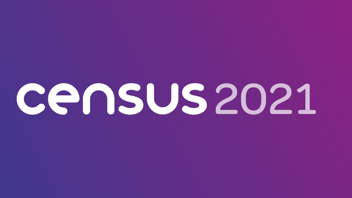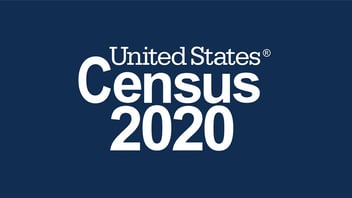With the upcoming release of the Census 2021 data for England and Wales scheduled for June, you will have access to lots of new demographics, but there are also changes to existing ones to navigate. This article will show you the incoming demographic groups whilst highlighting the most prominent changes.
There will be over 370 census demographics available for England and Wales; we'll highlight the new and matching demographic groups below.
2011 to 2021 matching demographic groups
| Population | Households |
| Population (Banded by age) | Households (Car or van availability) |
| Population (Economic activity) | Households (Composition) |
| Population (Ethnic group) | Households (Tenure) |
| Population (Gender) | Households (Type) |
| Population (Health) | |
| Population (Marital and civil partnership status) |
New 2021 demographic groups
| Population (Age of arrival in the UK) | Households (Deprivation) |
| Population (Country of birth) | Households (Language English and Welsh) |
| Population (Disability) | Households (Multiple ethnic groups) |
| Population (Distance travelled to work) | Households (Multiple main languages) |
| Population (Highest level of qualification) | Households (Number of bedrooms) |
| Population (Hours worked) | Households (Number of disabled people) |
| Population (Length of residence in the UK) | Households (Number of rooms) |
| Population (Migrant indicator) | Households (Occupancy rating for bedrooms) |
| Population (Multiple religions in household) | Households (Occupancy rating for rooms) |
| Population (National identity) | Households (Size) |
| Population (Occupation) | Households (Type of central heating) |
| Population (Passports held) | |
| Population (Proficiency in English Language) | |
| Population (Religion) | |
| Population (Residence) | |
| Population (Schoolchild or full-time student indicator) | |
| Population (Second address indicator) | |
| Population (Second address type) | |
| Population (Socio-economic classification NS-SeC) | |
| Population (Unpaid care) | |
| Population (Workplace travel method) | |
| Population (Year of arrival in the UK) |
Changes to existing demographics
The first major change is that the definition of what a “Household” is has changed in the 2021 census. This means that when you update your territories to use the latest census data, it may surprise you that some of your territories might have decreased in the number of households rather than increased. For more information on the change, read our article, understanding households in the UK Census.
The second significant change to the 2011 demographics is within the Population Banded by Age group. You can see in the table below, the 2011 census demographics in the left column and the new 2021 census demographics in the right column. The 2021 demographics move up in 5-year bands, whereas there were smaller bands in the lower ages and broader ones in the mid to higher bands in 2011.
This is most likely the case because of trying to merge the England and Wales, Scotland and Northern Ireland censuses as they don't ask standardised questions with standardised answers. This could mean that when the other two countries release their new census data, there could be a change to these Age Band demographics again.
This is important for anyone currently using Age Band demographics that don't match the new format. This is because when you look at upgrading to the new census demographics, you won't be able to access or recreate those old bands anymore (for England and Wales). For Example, if you use a demographic that is children aged 0 to 7, you would now only be able to do children aged 0 to 9. You could, of course, still view the individual 5-year bands, but you can't exactly recreate what was done previously.
| Census 2011 Banded by Age Demographics | Census 2021 Banded by Age Demographics |
| Age 0 to 4 | Age 0 to 4 |
| Age 5 to 7 | Age 5 to 9 |
| Age 8 to 9 | |
| Age 10 to 14 | Age 10 to 14 |
| Age 15 | Age 15 to 19 |
| Age 16 to 17 | |
| Age 18 to 19 | |
| Age 20 to 24 | Age 20 to 24 |
| Age 25 to 29 | Age 25 to 29 |
| Age 30 to 44 | Age 30 to 34 |
| Age 35 to 39 | |
| Age 40 to 44 | |
| Age 45 to 59 | Age 45 to 49 |
| Age 50 to 54 | |
| Age 55 to 59 | |
| Age 60 to 64 | Age 60 to 64 |
| Age 65 to 74 | Age 65 to 69 |
| Age 70 to 74 | |
| Age 75 to 84 | Age 75 to 79 |
| Age 80 to 84 | |
| Age 85 to 89 | Age 85 and over |
| Age 90 and over |





